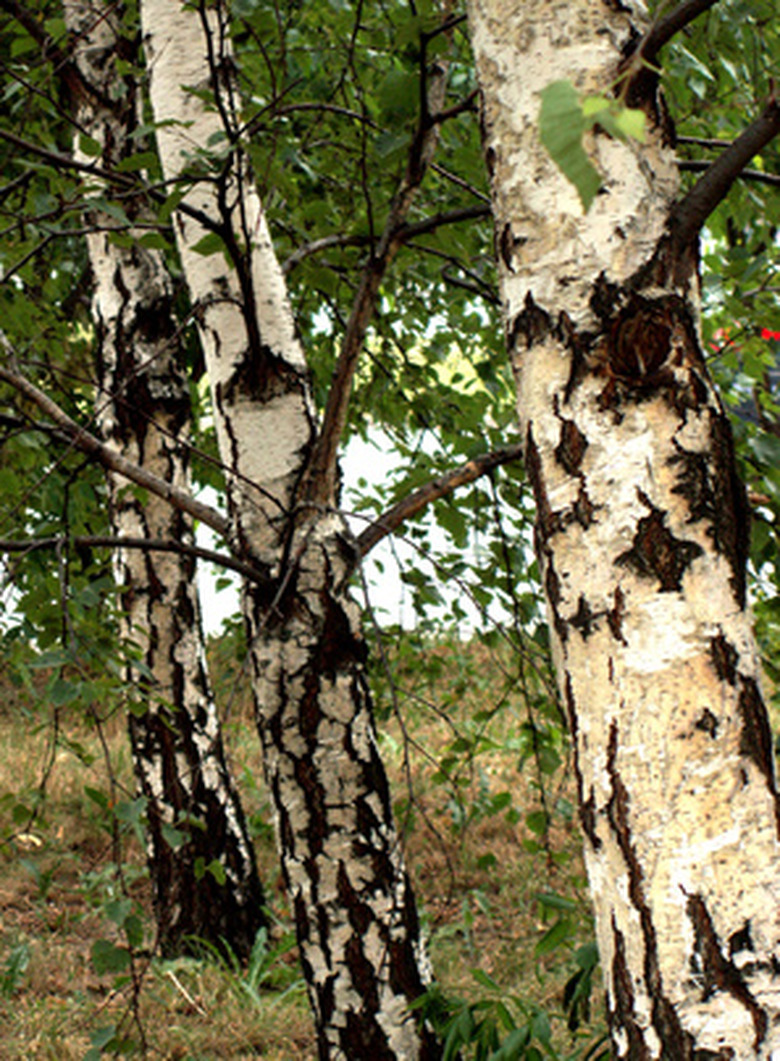How To Grow Birch Trees In Washington State
Things Needed
- White birch seedling
- Shovel
- Peat moss, manure, compost, coconut coir or other organic material
Few trees are as graceful as the white birch, Betula pendula, an upright tree with white bark, lacy, pendulous side branches and small leaves. Native to Europe and Asia Minor, it is hardy in all areas of Washington state in the U.S. and thrives both east and west of the mountains if given plenty of water. It eventually reaches 30 to 40 feet in height and half that in width, and is especially suitable for planting in small groves.
Step 1
Choose a place for your birch that is easy to water or has plenty of water naturally. Stream edges are excellent places for birches to grow though they dislike soggy, poorly drained soil. Even in rainy western Washington you need to plan for providing constant moisture during the summer. East of the mountains, your tree will do best with extra water during the dry spells in winter as well as during summer heat.
- Few trees are as graceful as the white birch, Betula pendula, an upright tree with white bark, lacy, pendulous side branches and small leaves.
- East of the mountains, your tree will do best with extra water during the dry spells in winter as well as during summer heat.
Step 2
Dig a hole that is at least a foot wider and deeper than the root ball of your birch tree. If it is in a container, take it out and gently spread the roots out as much as possible to estimate the diameter of the hole needed.
Step 3
Mix the soil taken from the hole with organic matter such as compost, peat moss, manure or coconut coir. All these materials help to hold water and nourish the young tree.
Step 4
Fill the bottom of the hole with the improved soil deep enough to support the birch so that the top of the root ball is level with the top of the soil. Spread the roots and work the rest of the improved soil through and around them, gradually filling the hole to the top.
Step 5
Water thoroughly to a depth of at least a foot and then water regularly throughout the first summer, never letting the soil dry out. During the second year, you can allow the top inch or two of ground to dry, but your birch tree will be quite happy with as much water as it can get.
- Dig a hole that is at least a foot wider and deeper than the root ball of your birch tree.
- During the second year, you can allow the top inch or two of ground to dry, but your birch tree will be quite happy with as much water as it can get.
Tip
If you live in eastern Washington (or have very sandy soil on the coast) use coconut coir or add water-holding granules to the soil to help the roots get the moisture they need during the long, hot inland summers. Coir absorbs and holds more water than peat moss, up to nine times its weight, and the water-holding gel granules swell to the size of marbles with the water they absorb, ready to slowly release it to the thirsty roots.
Warning
Allowing the roots of a birch to dry out can stunt its growth and make it more susceptible to attack by insects and disease. You can't really overwater these trees, so err on the side of too much water rather than too little.
References
- U.S. Dept. Of Agriculture: How to Grow and Maintain a Healthy Birch Tree
- The Sunset National Garden Book; Sunset Books; 1999
